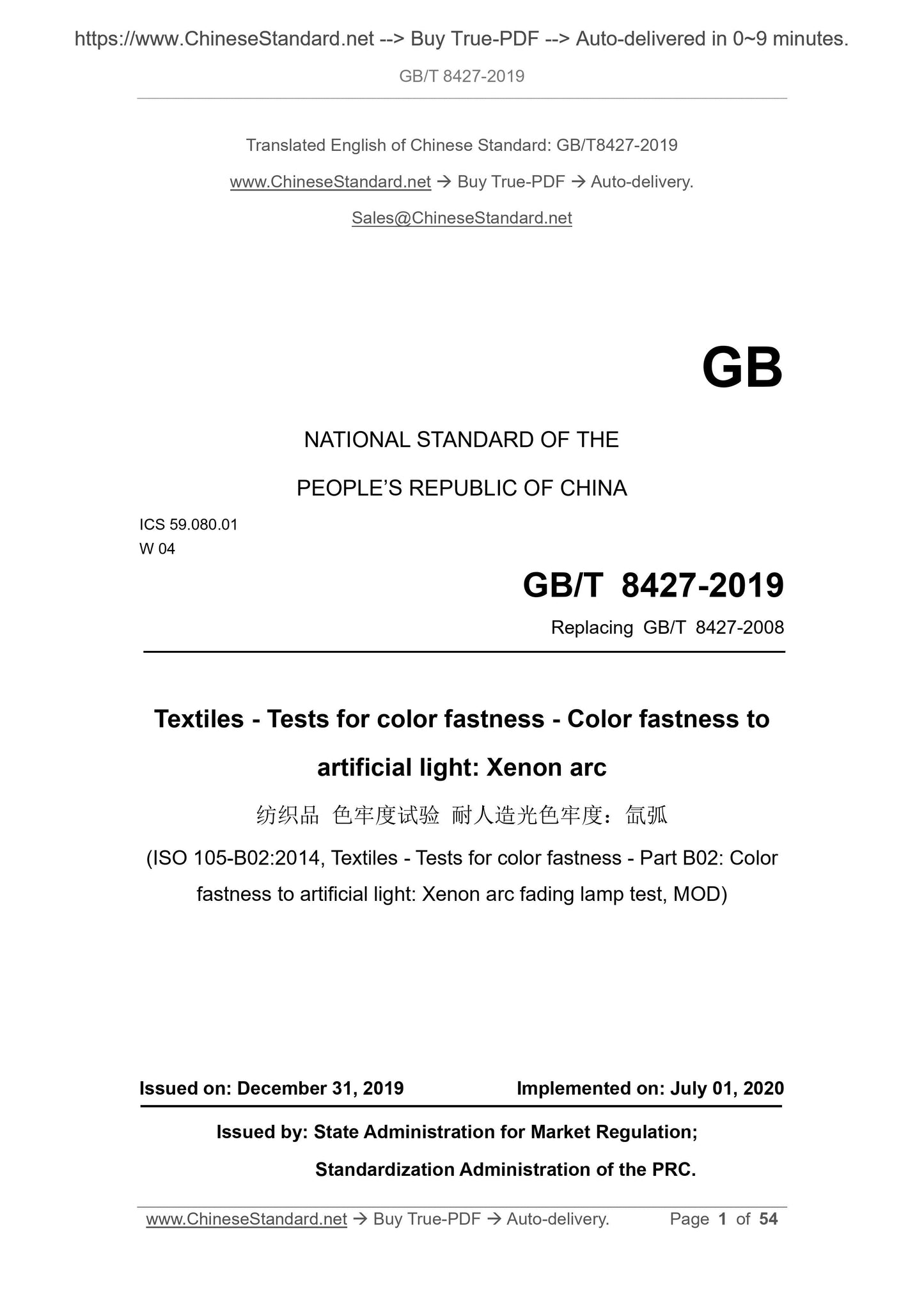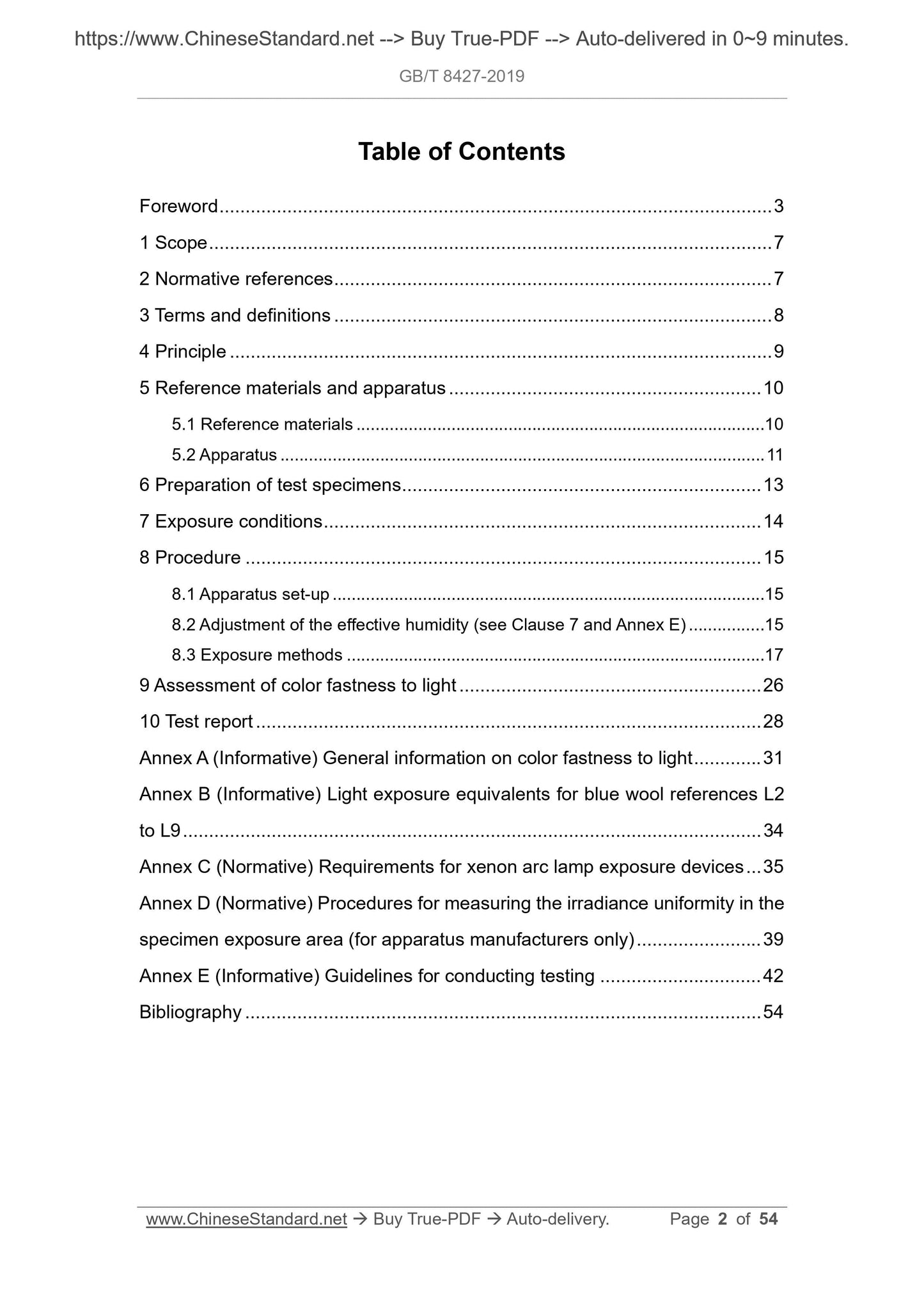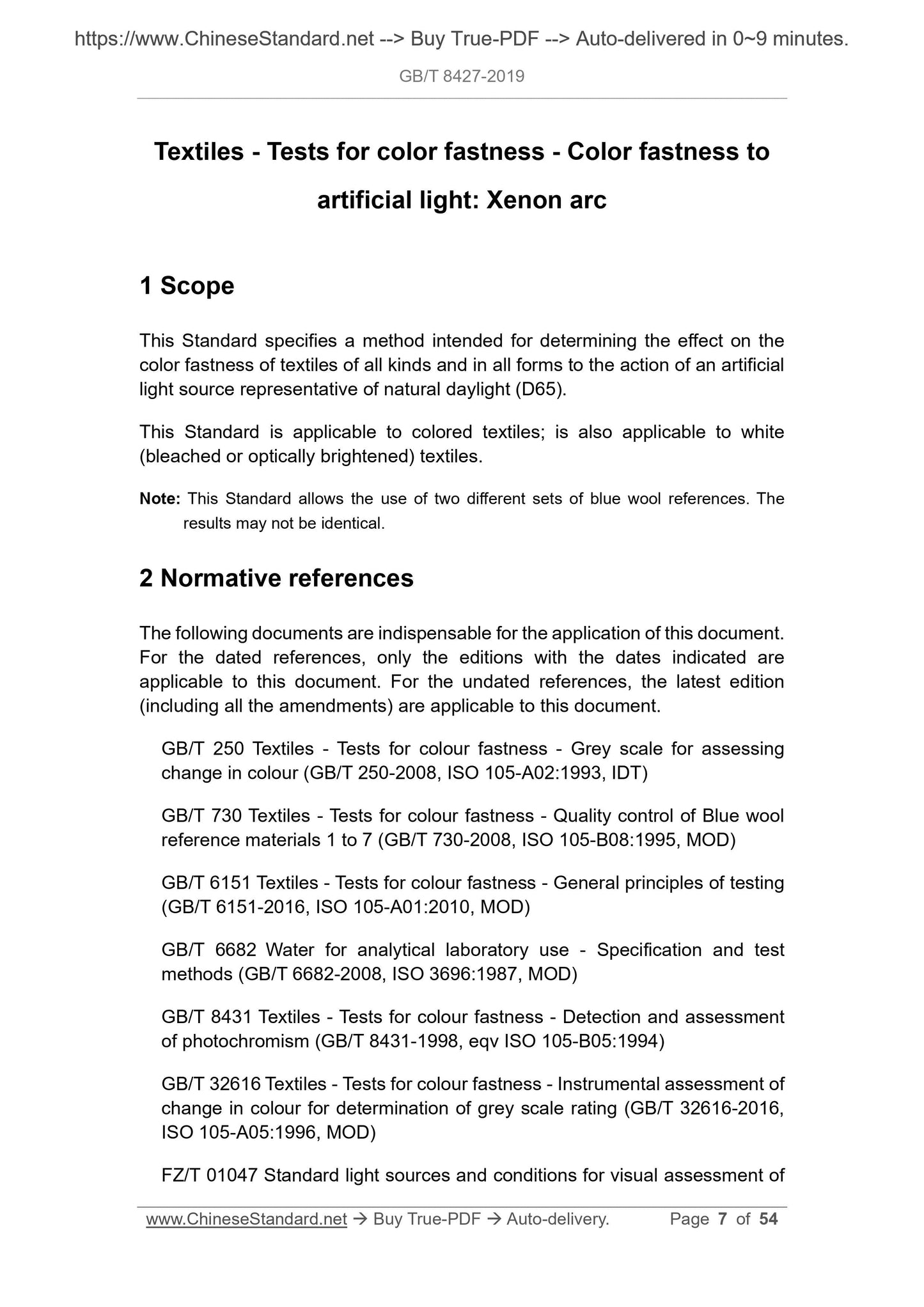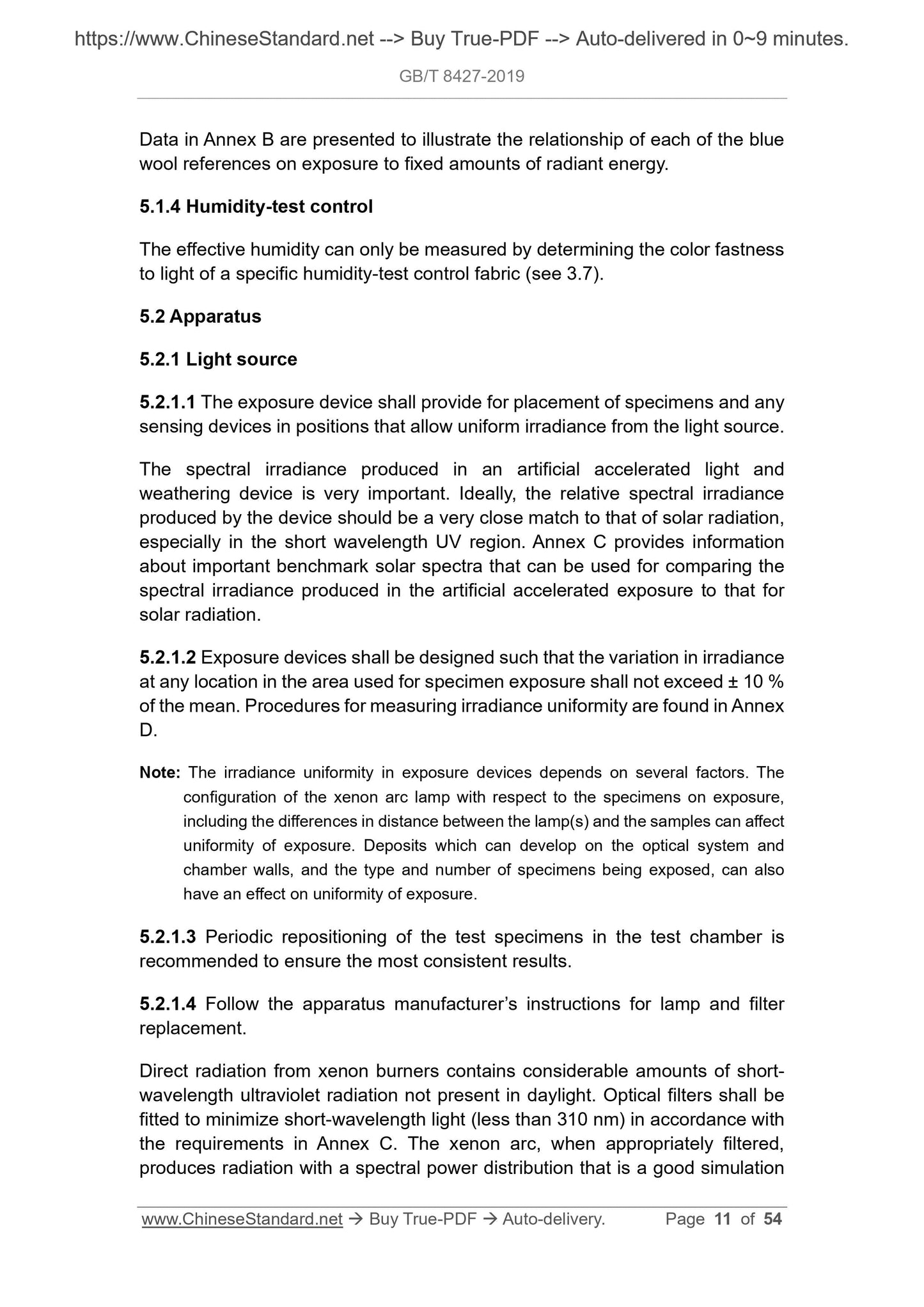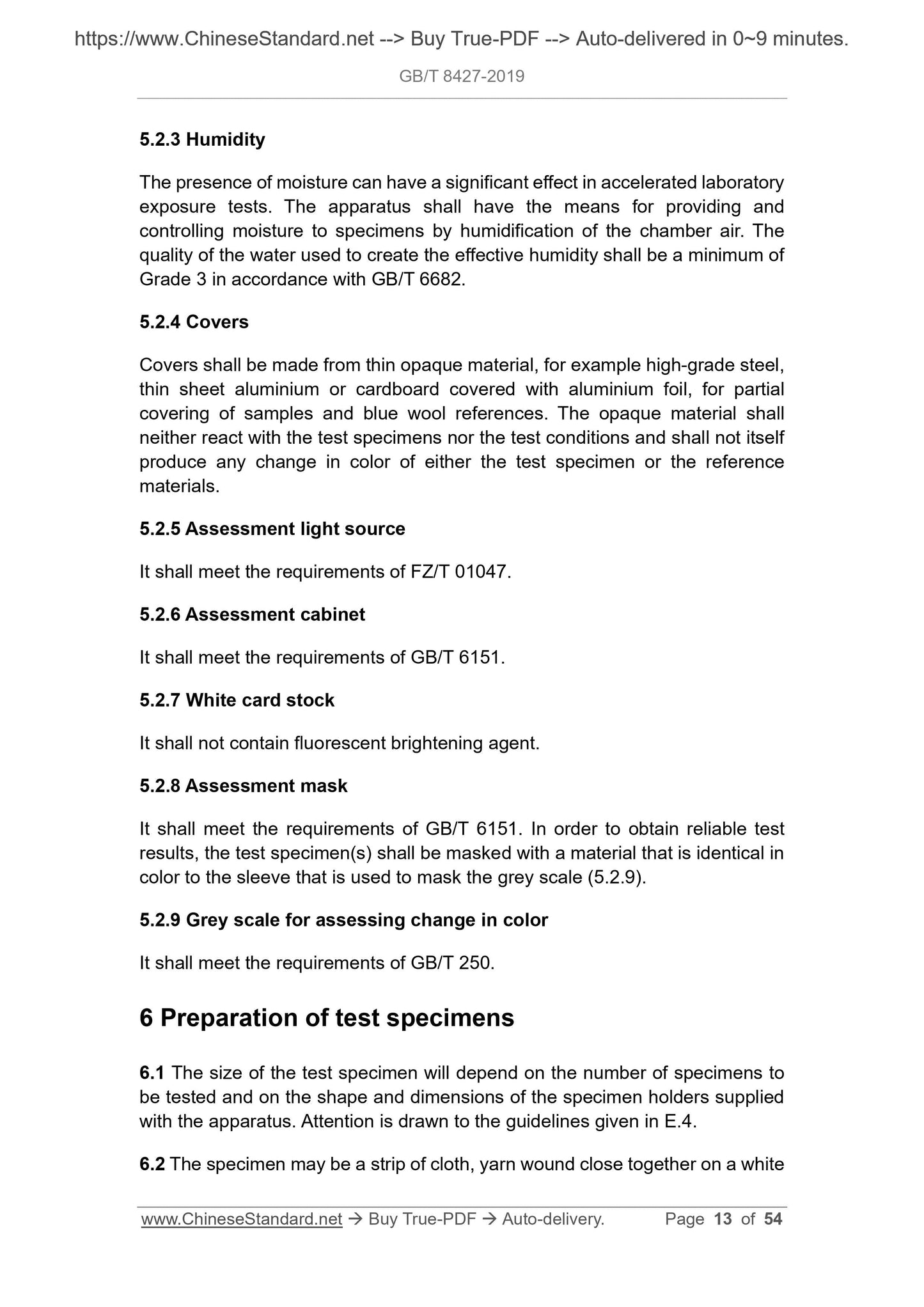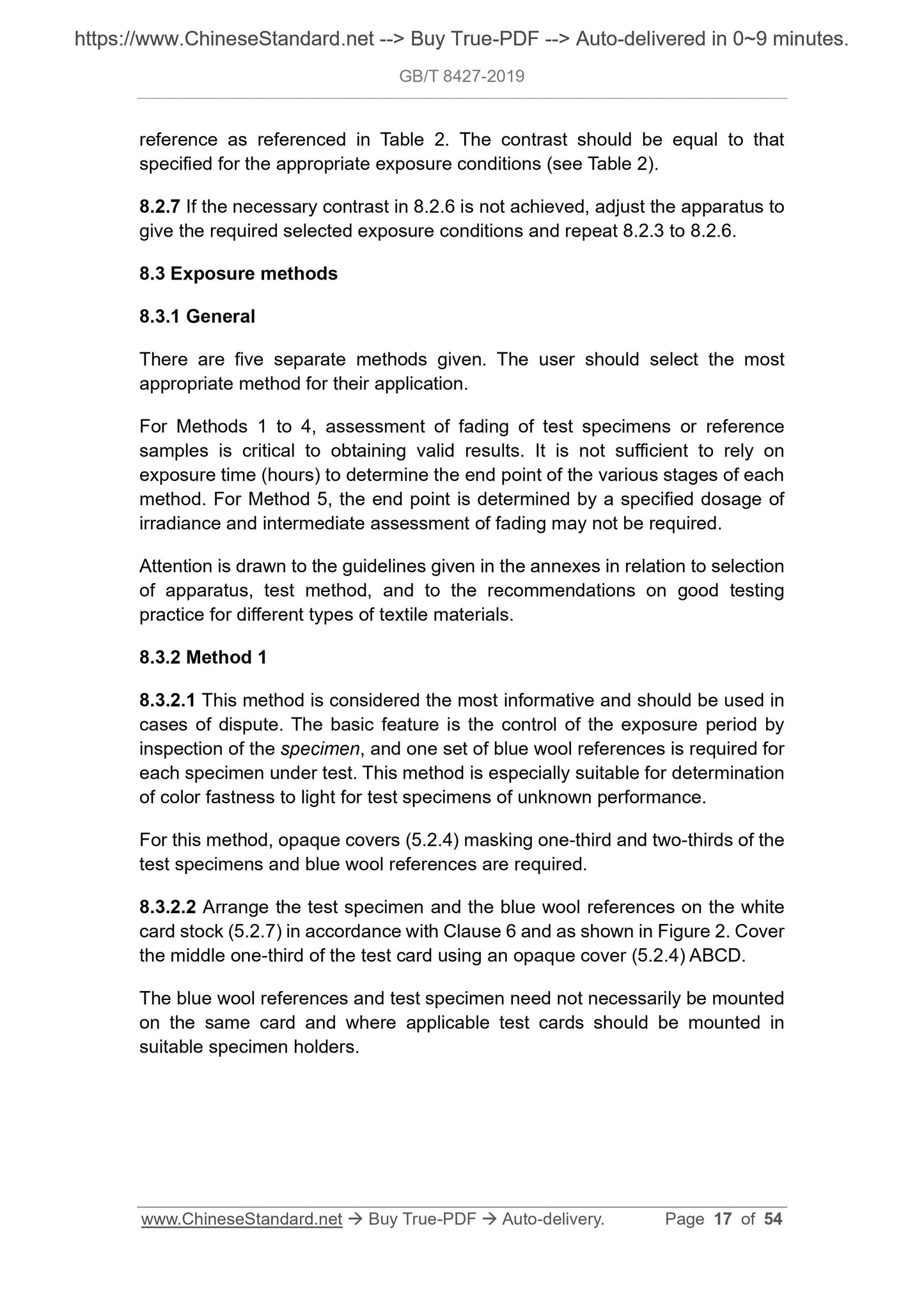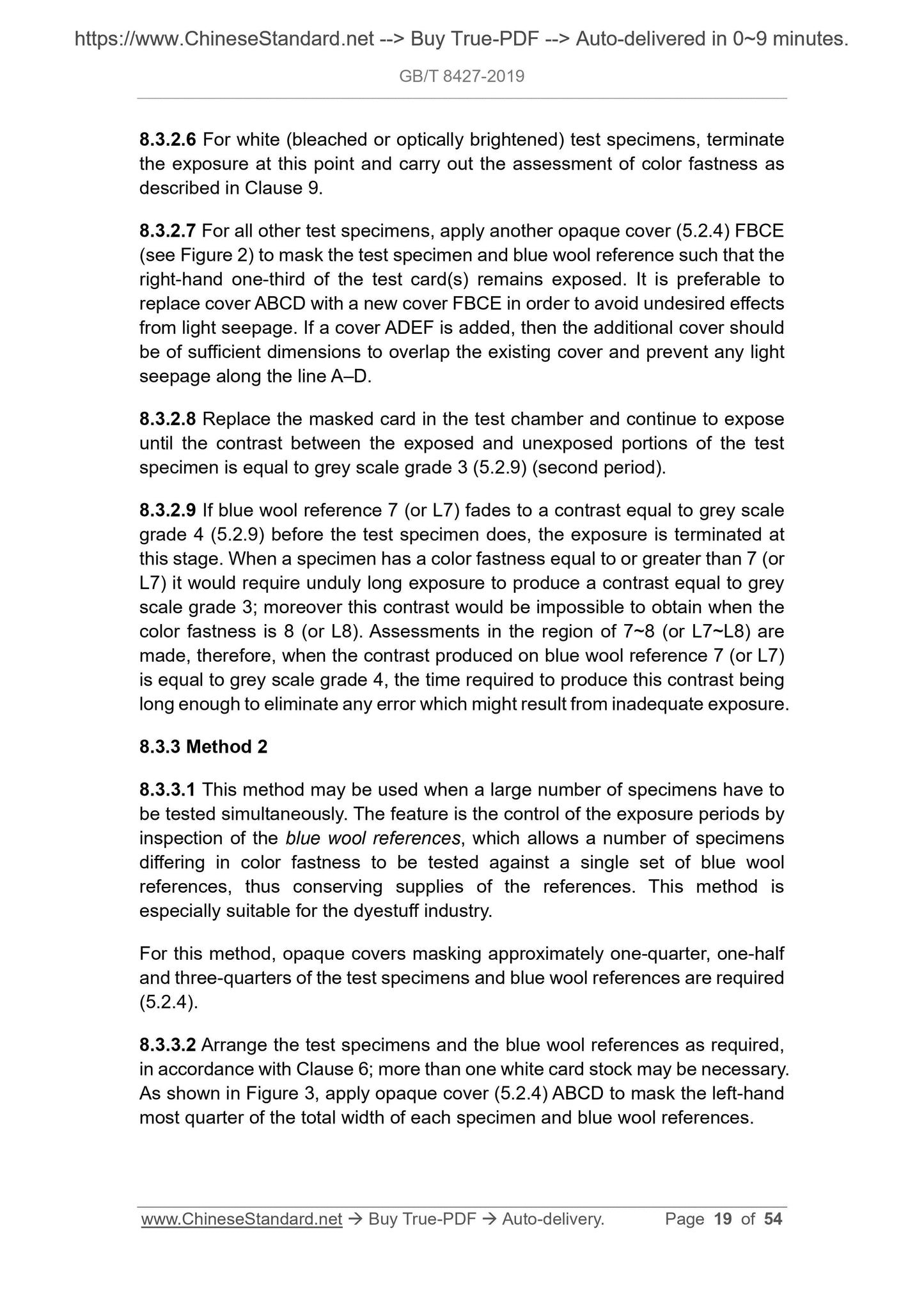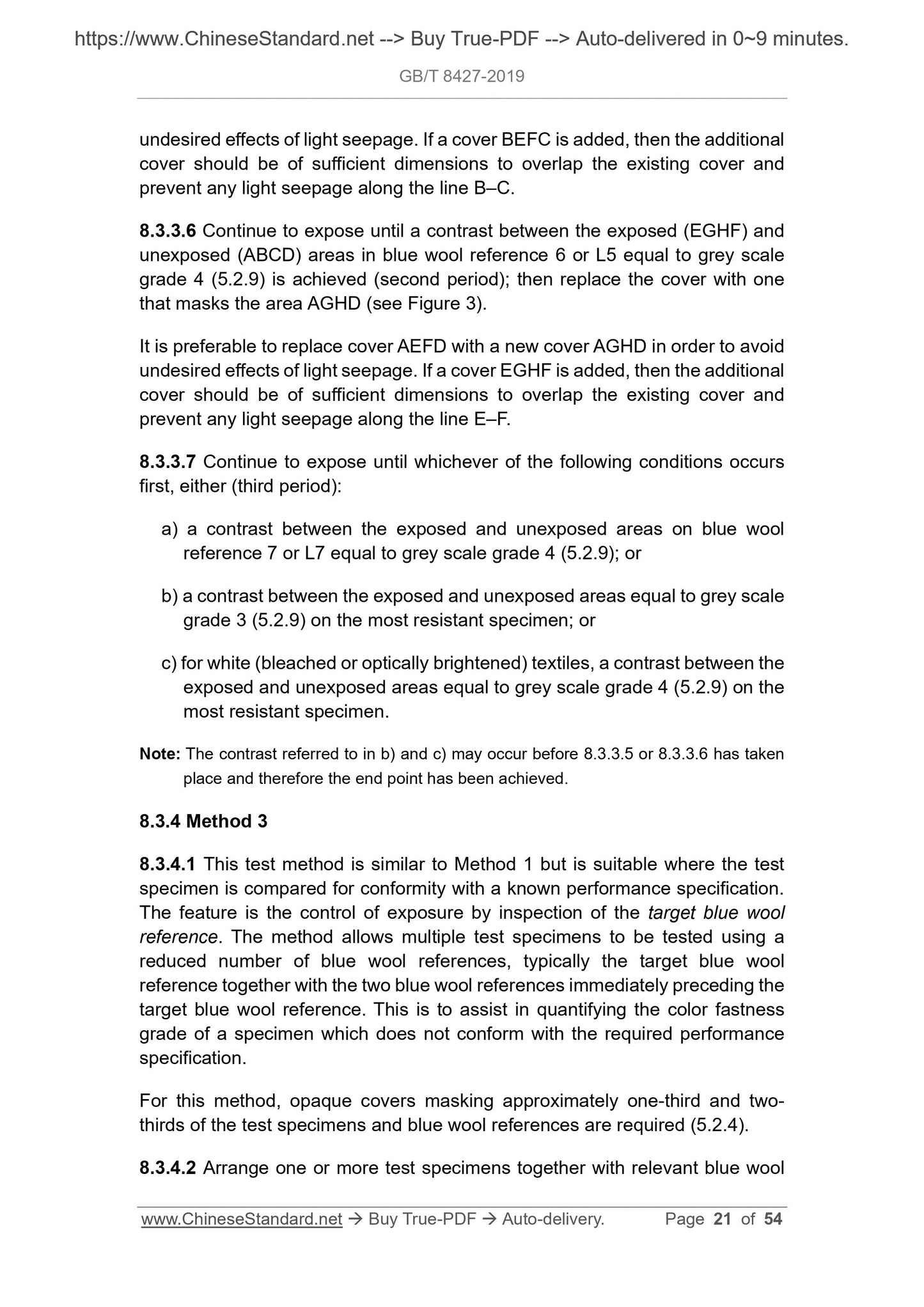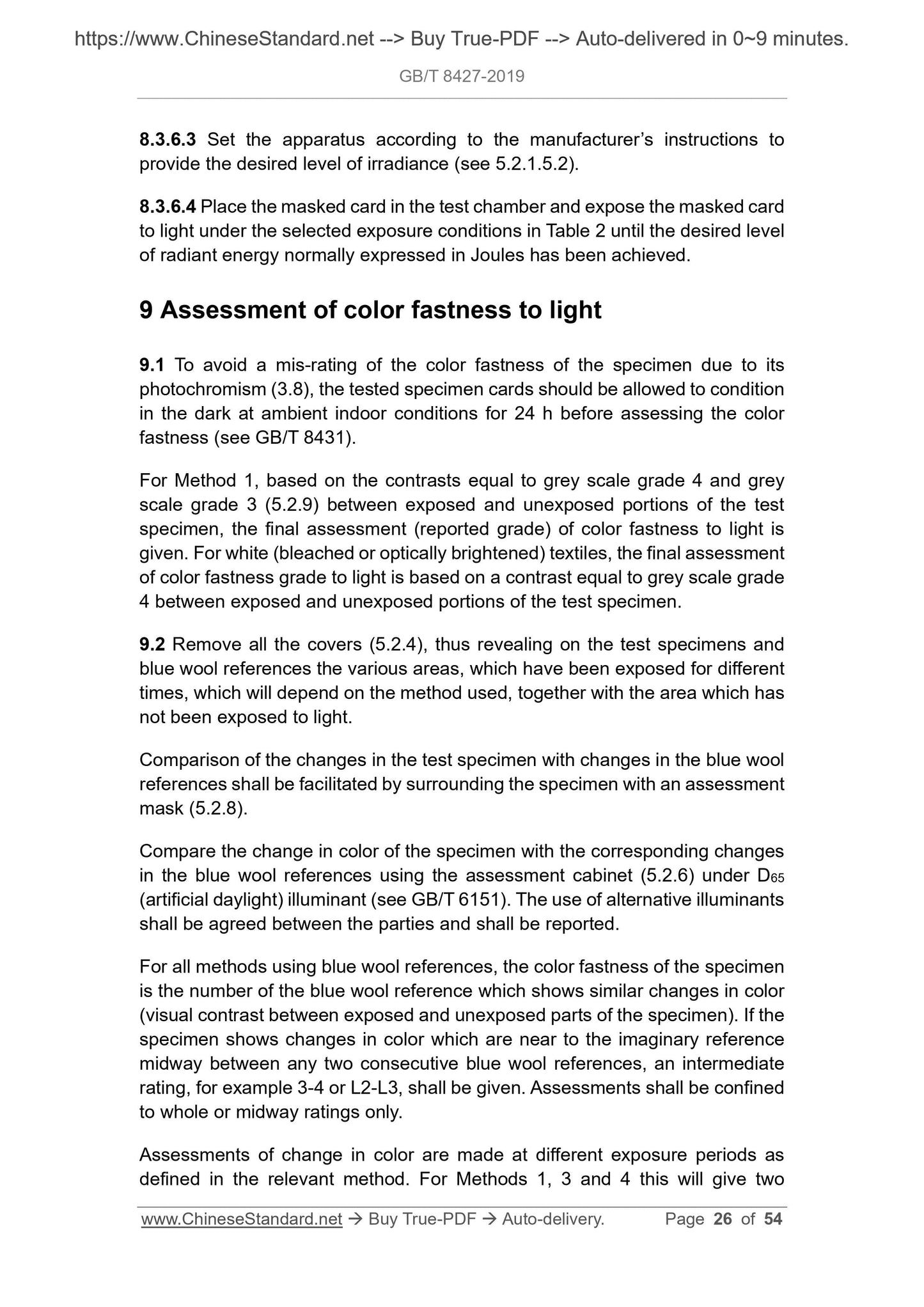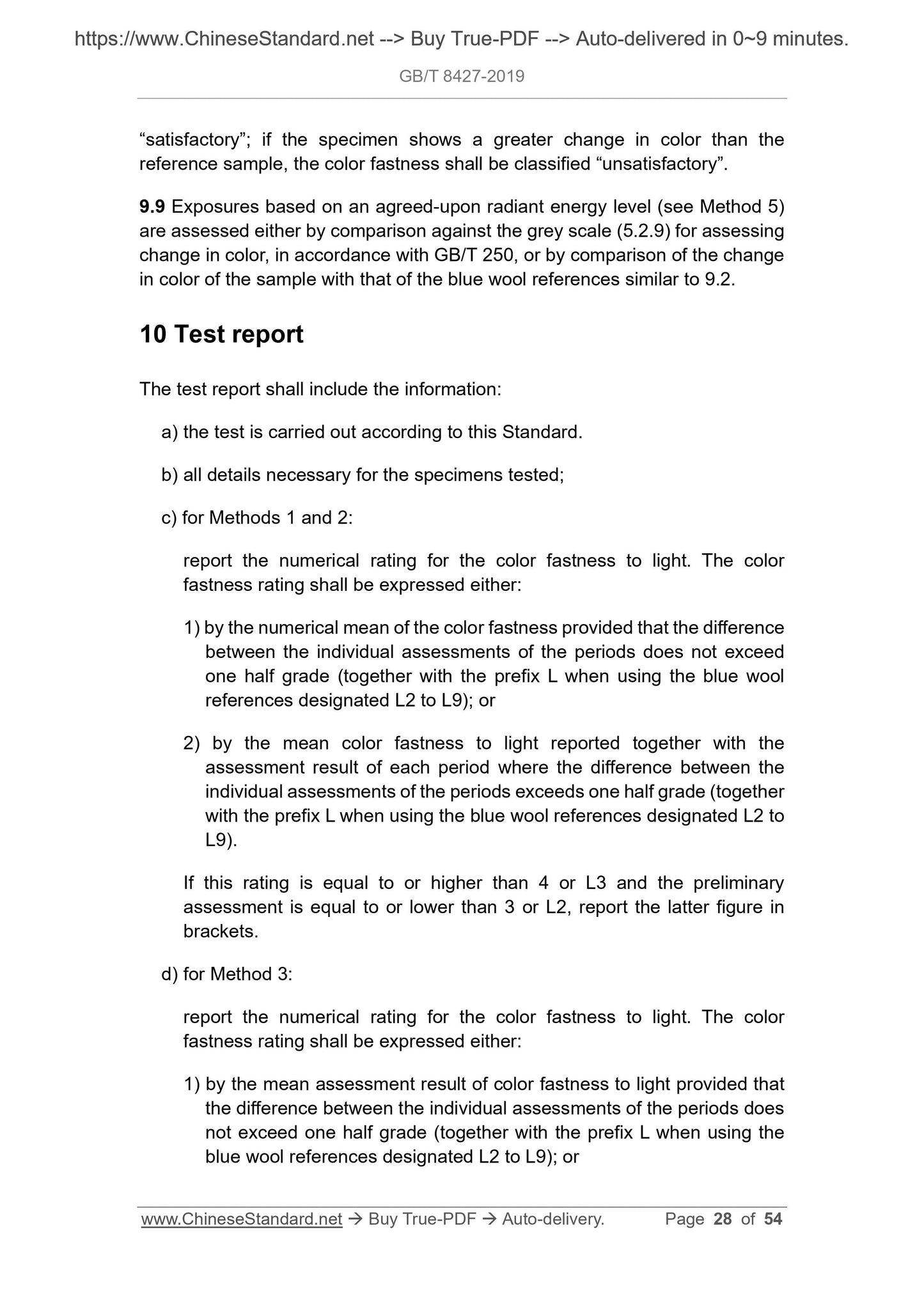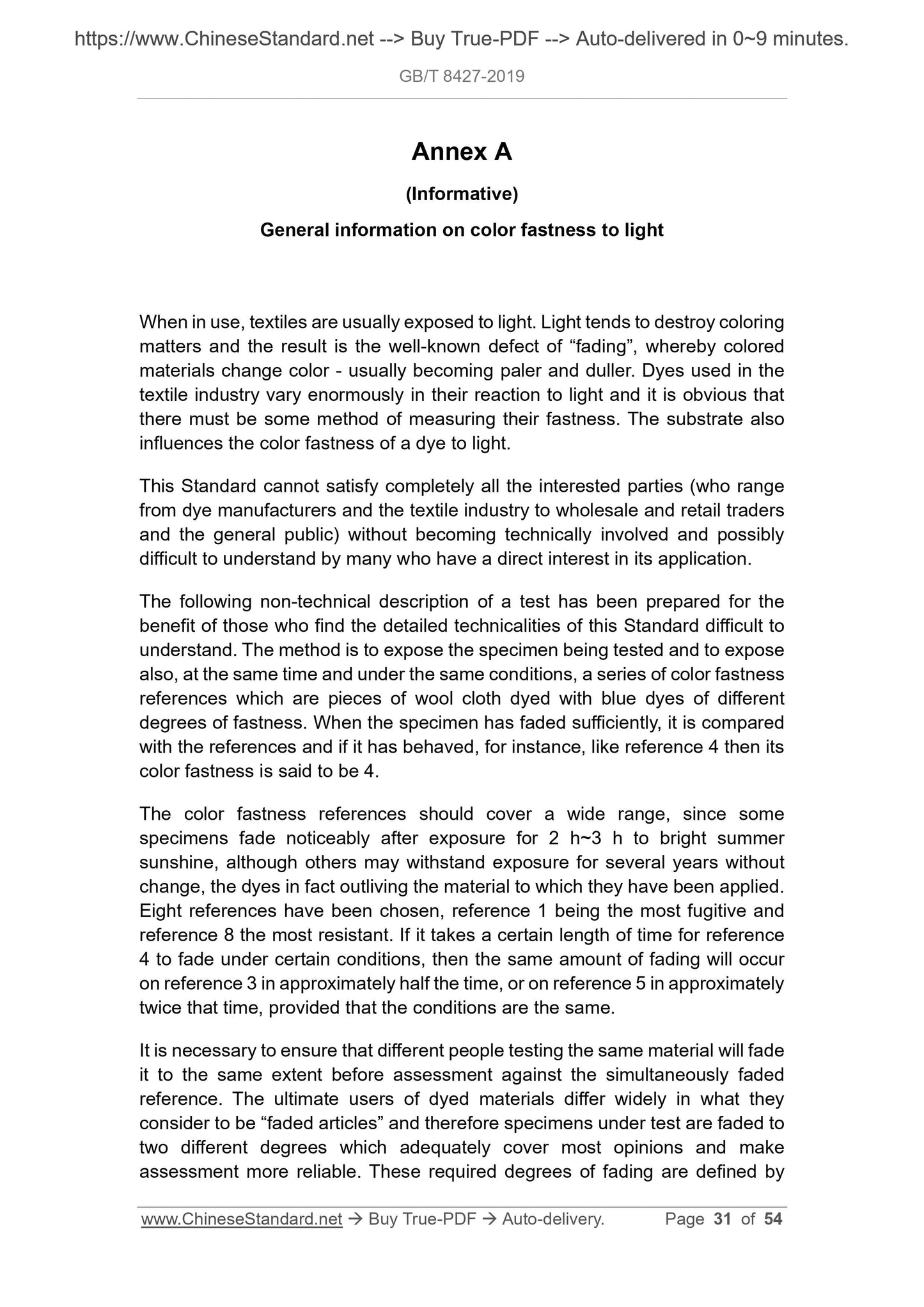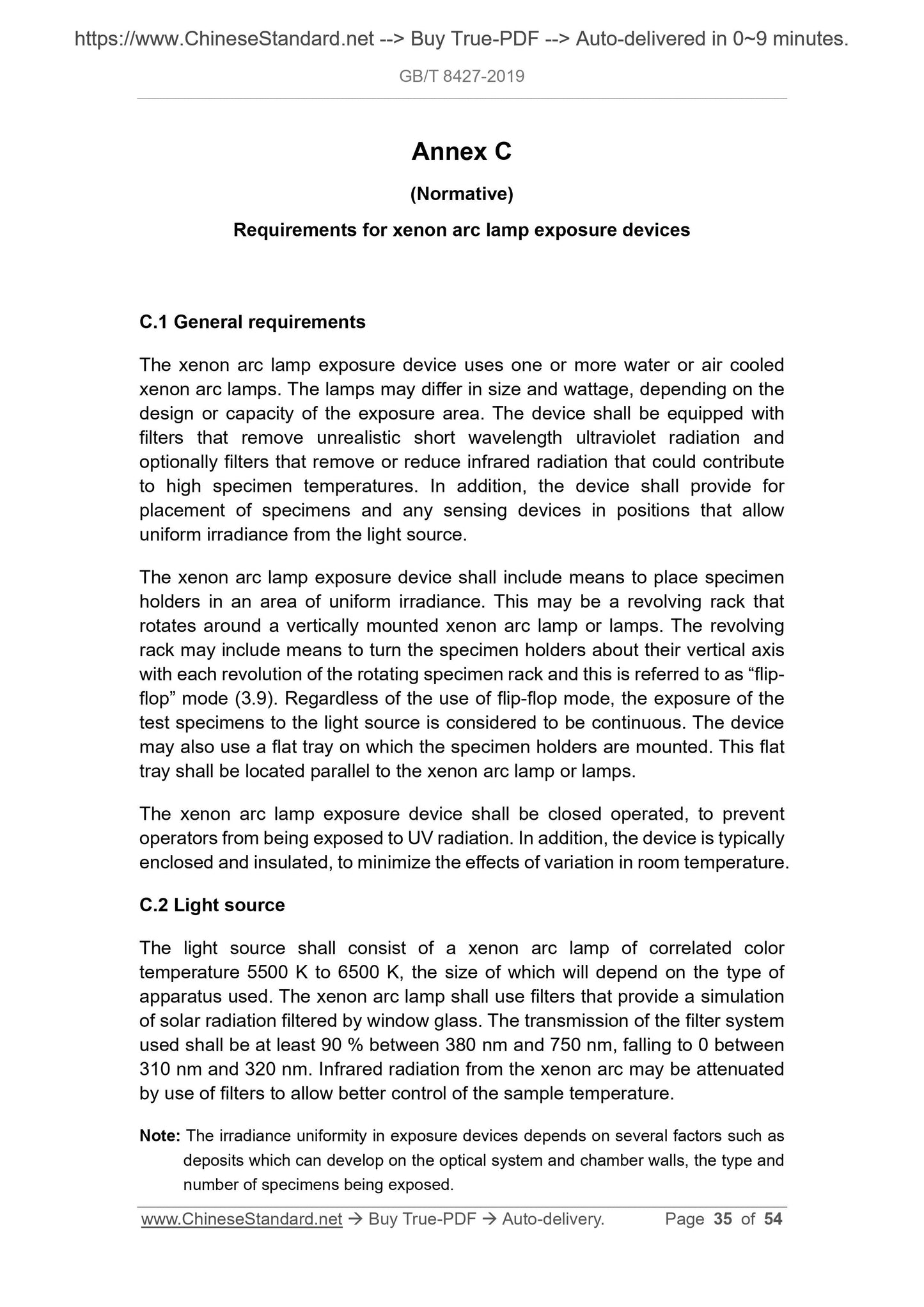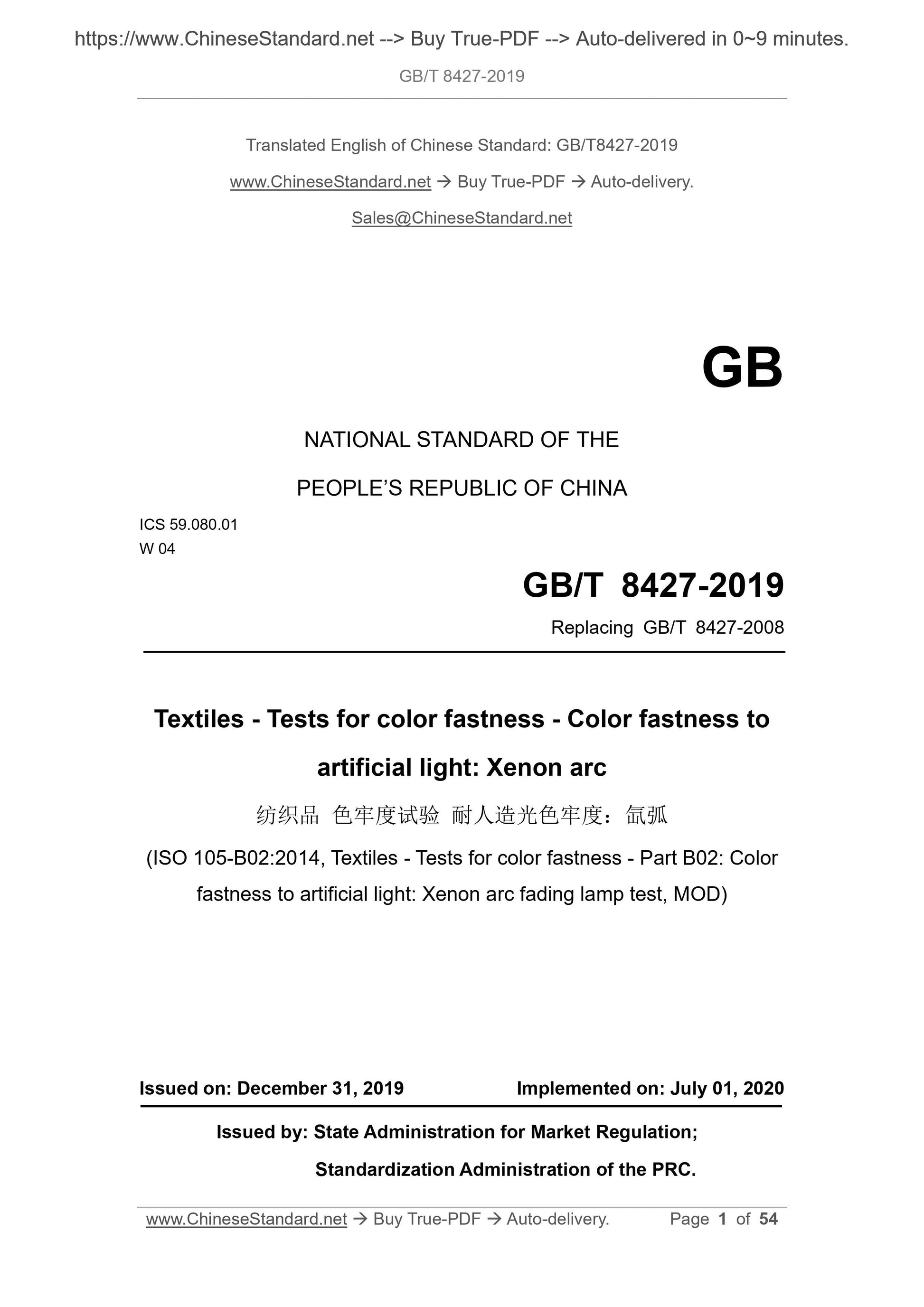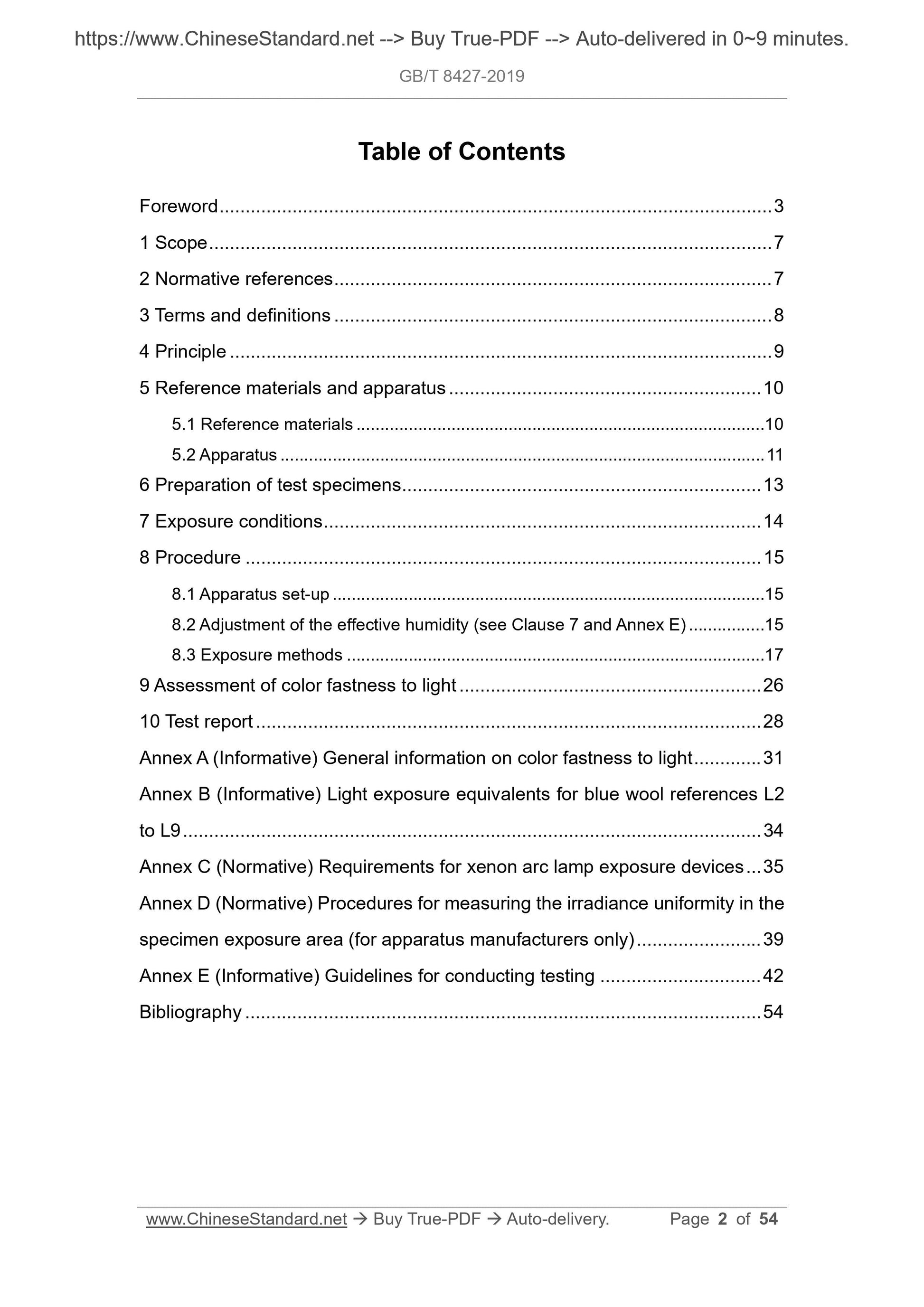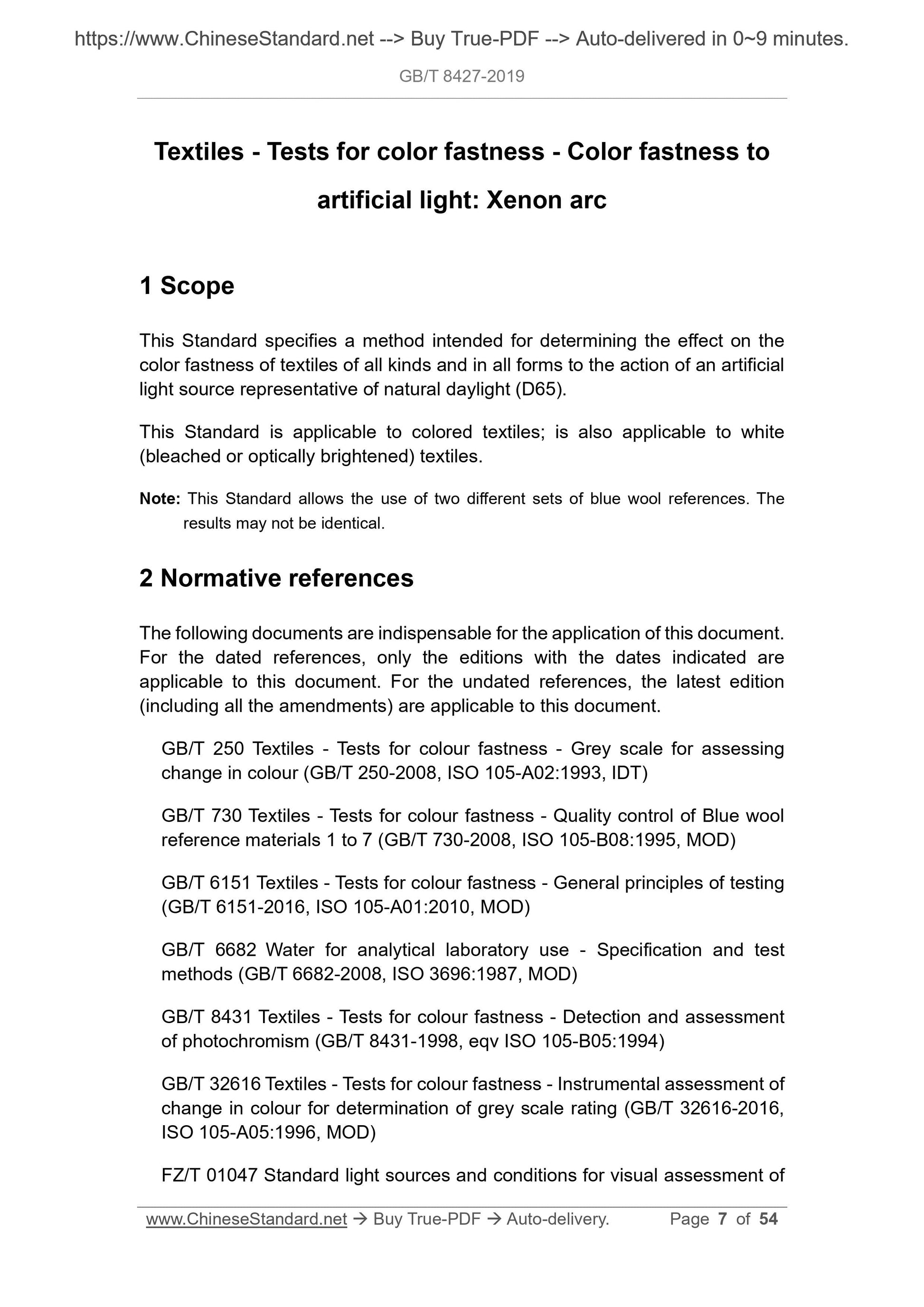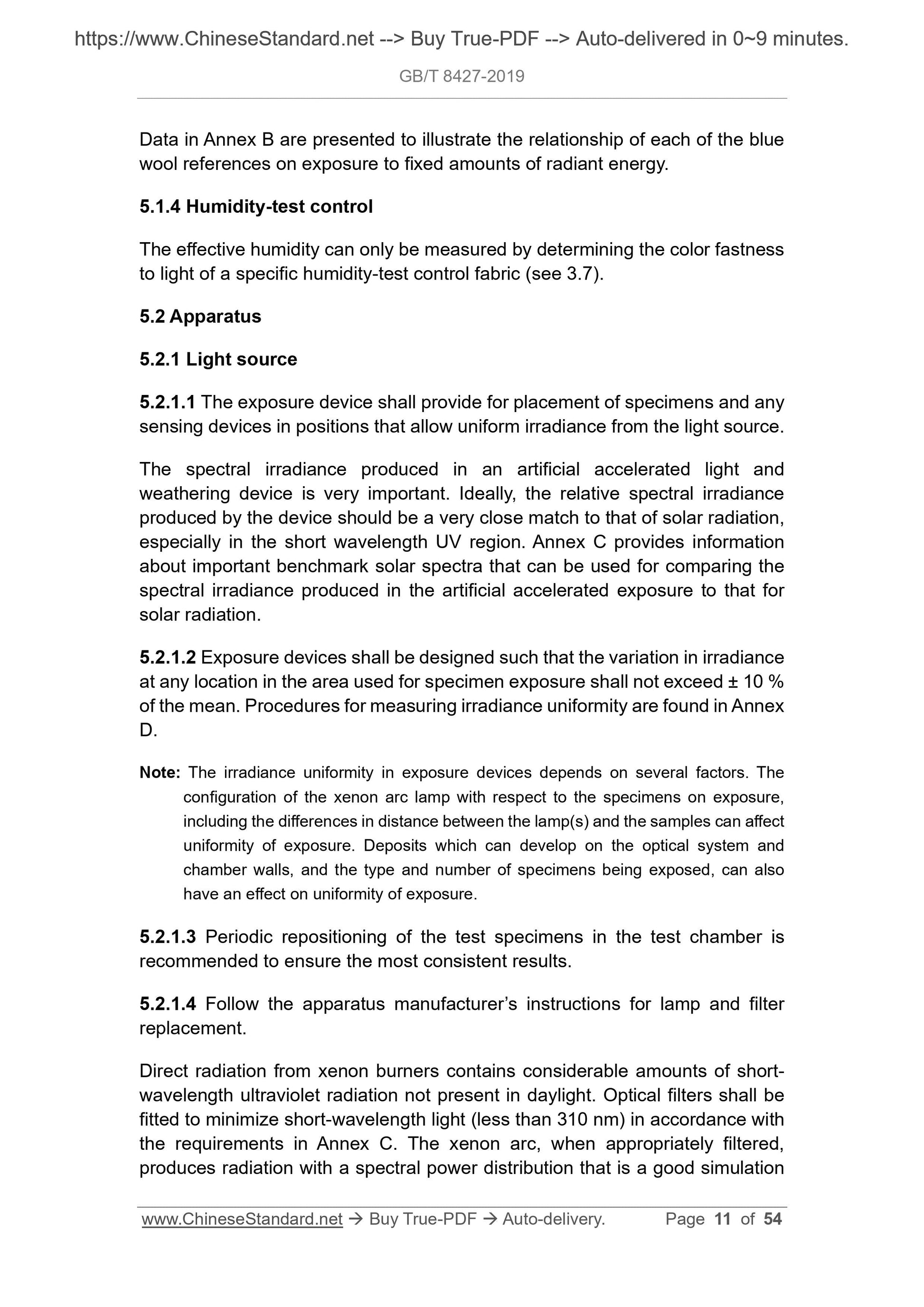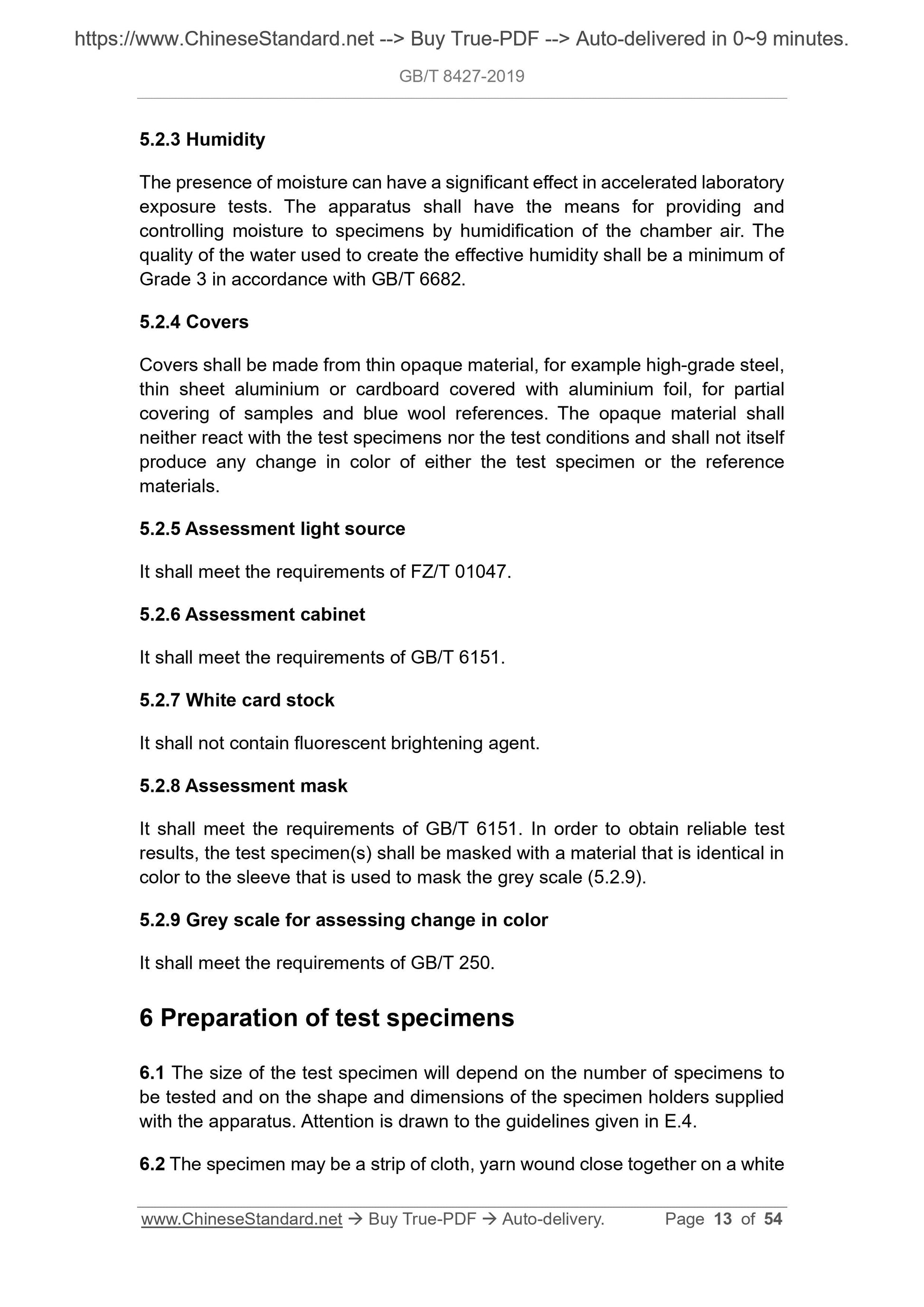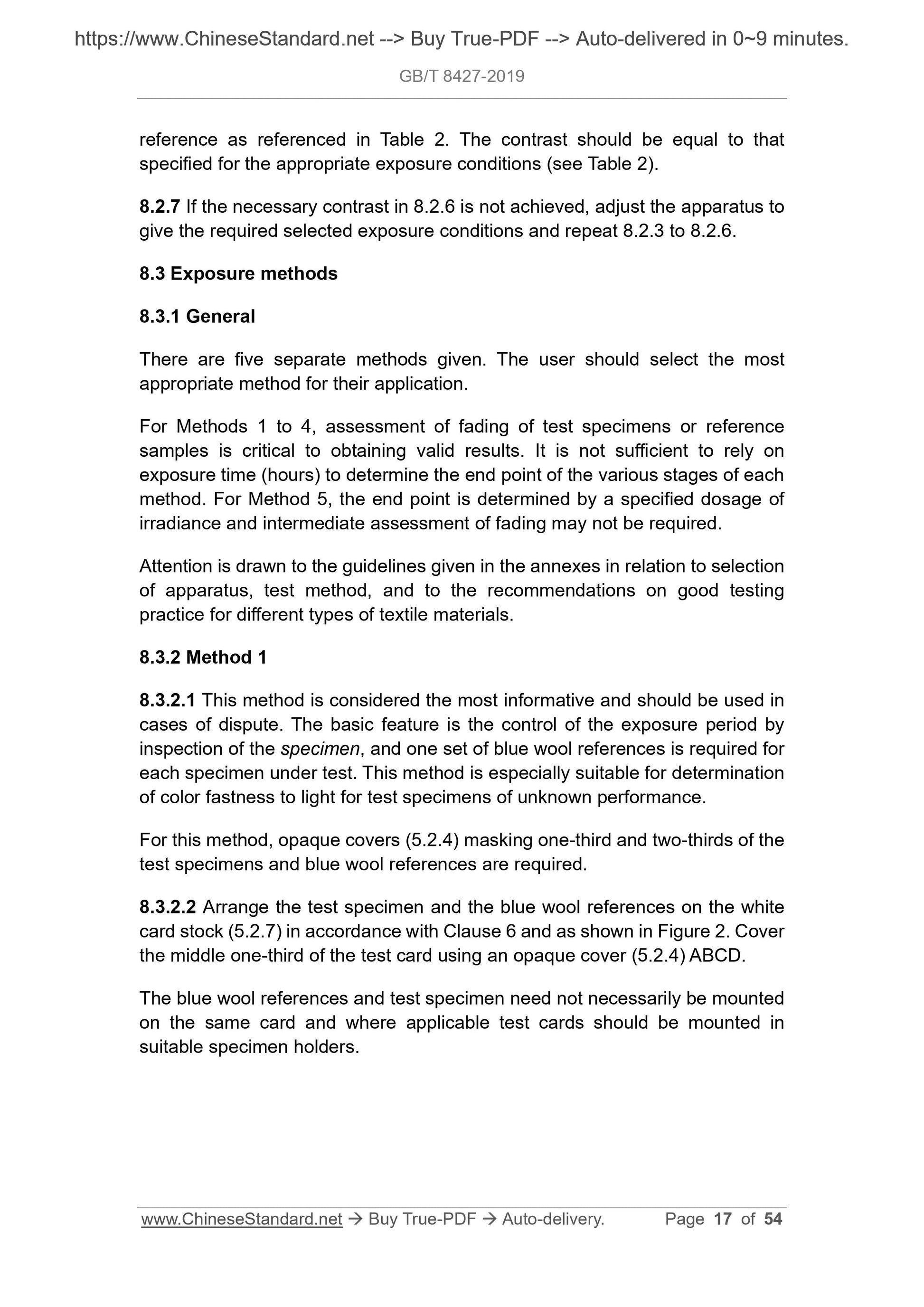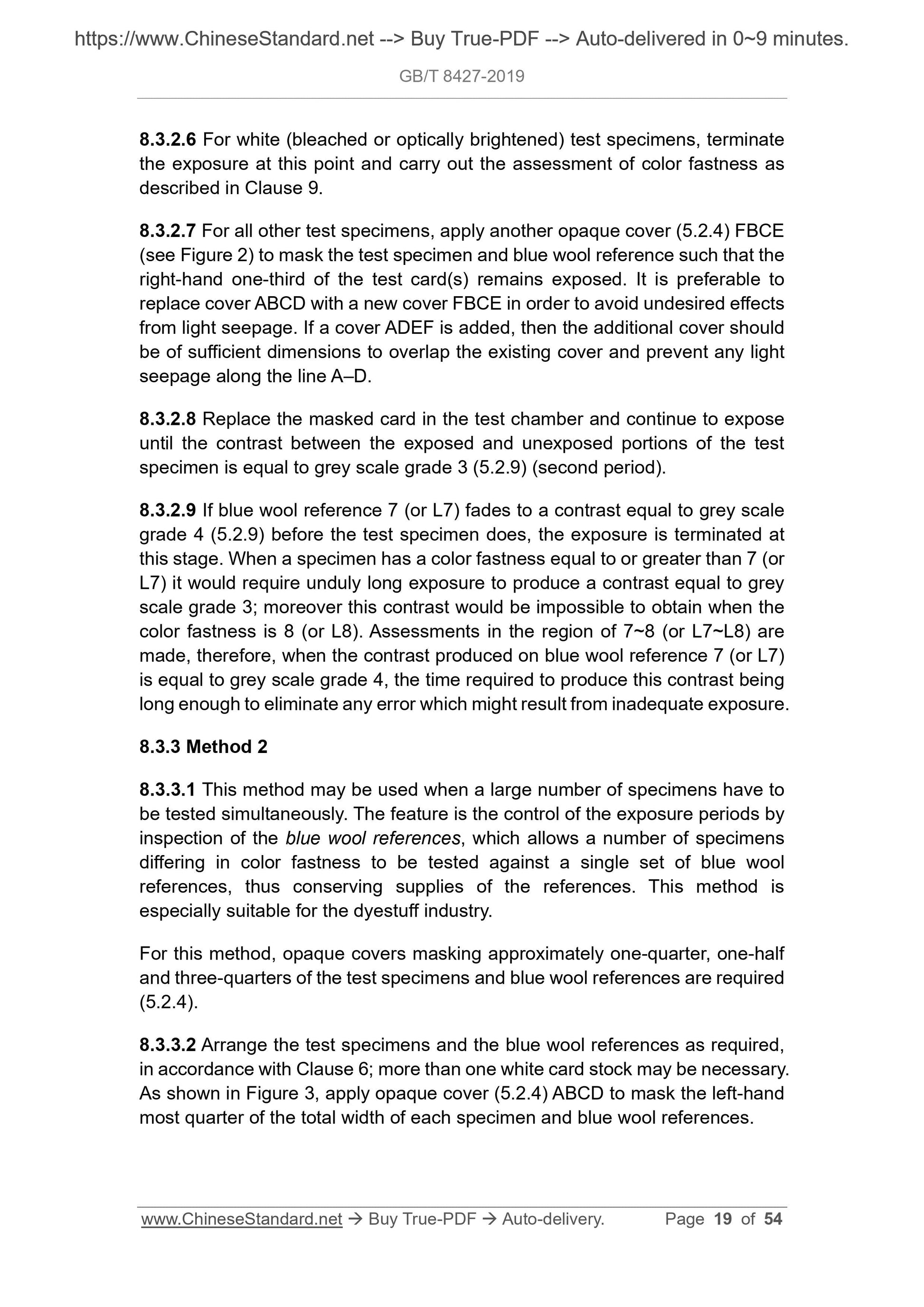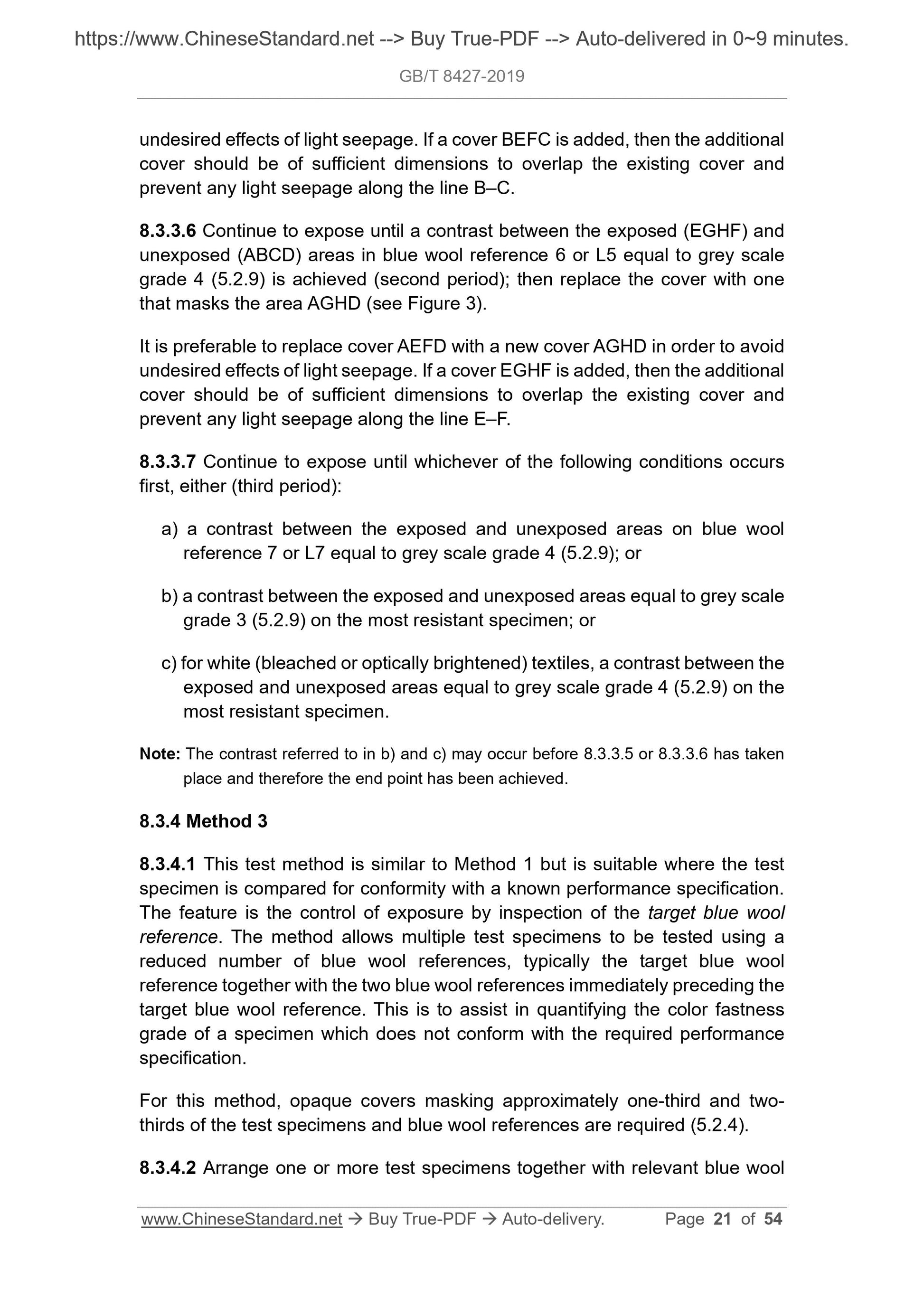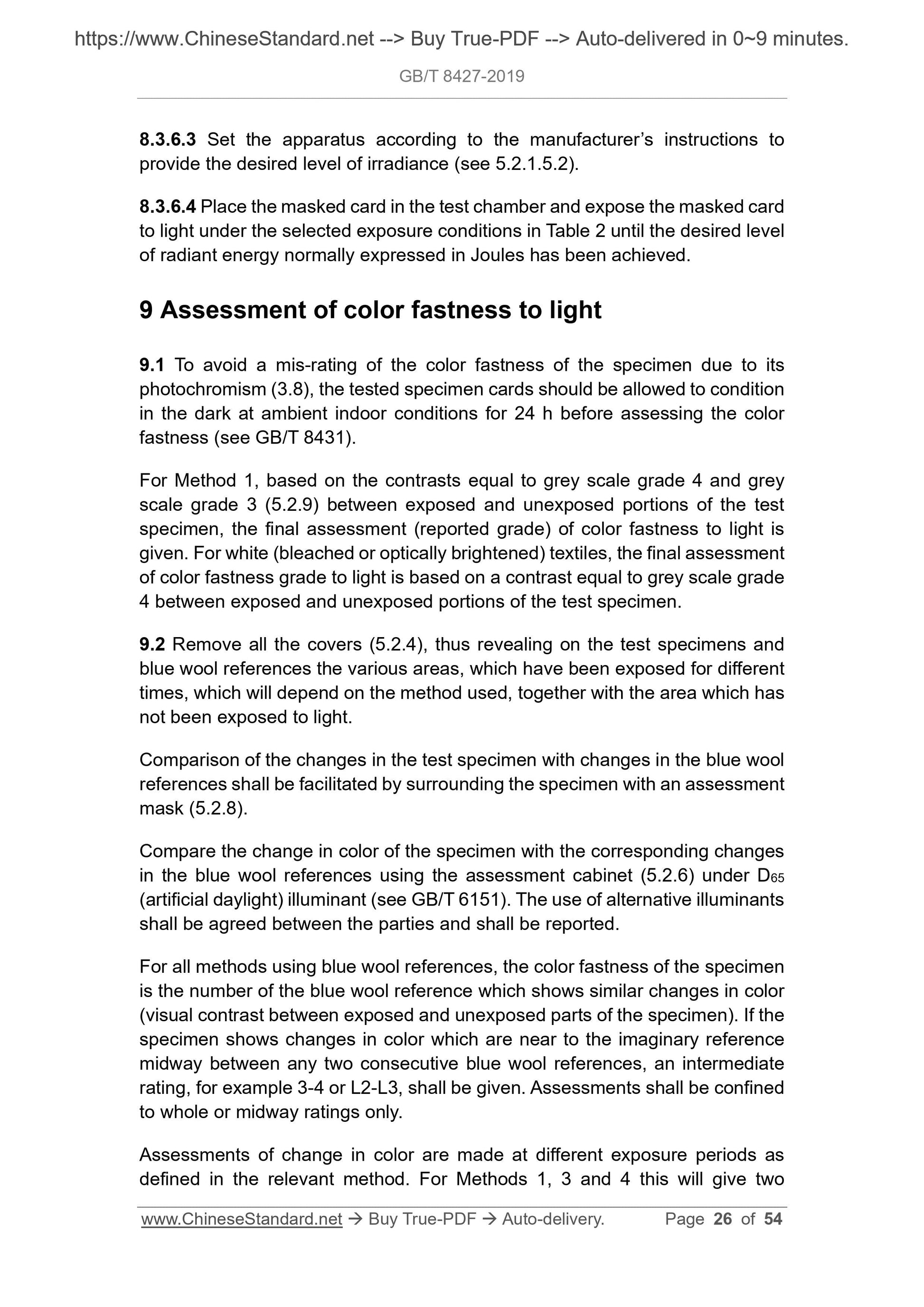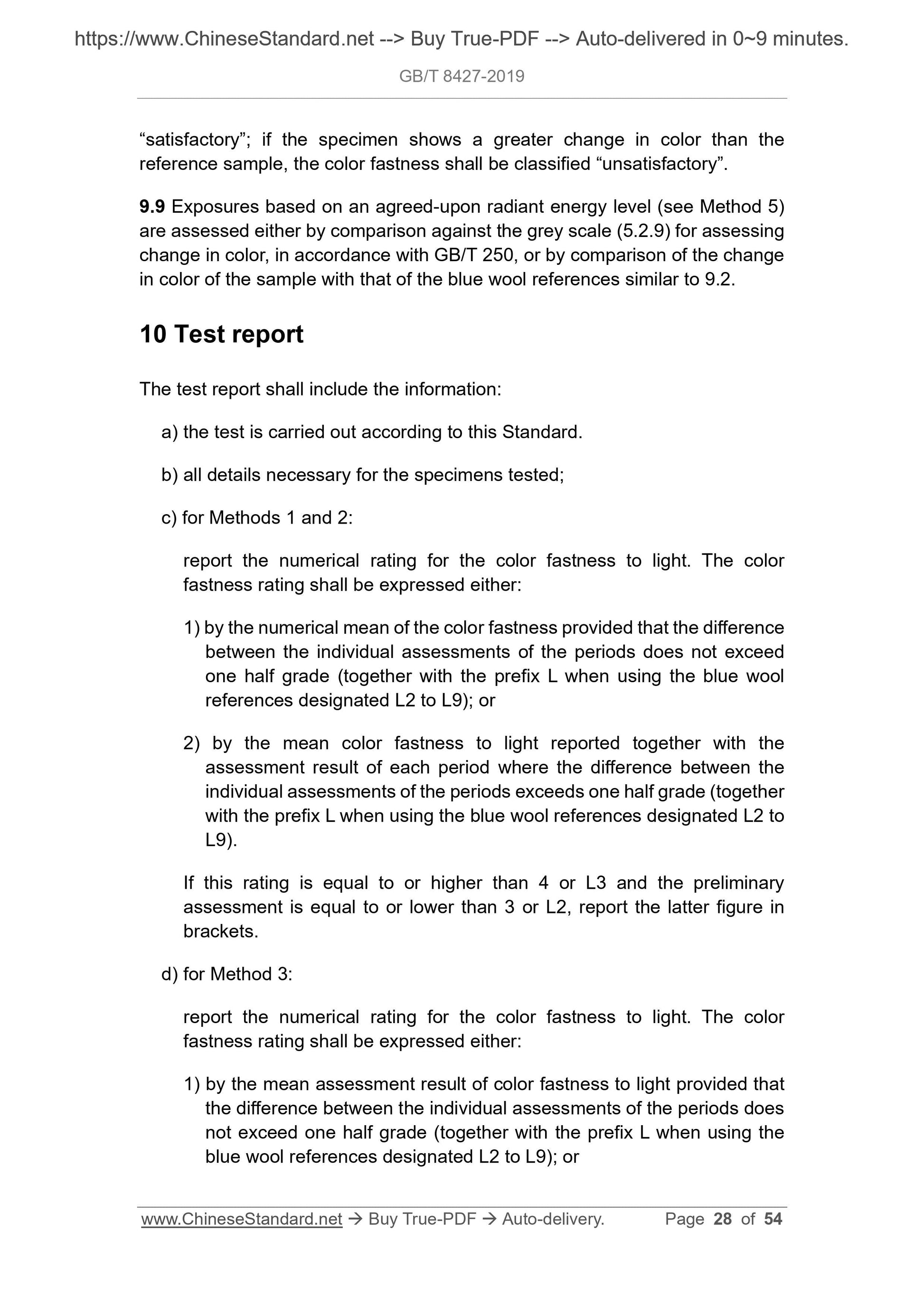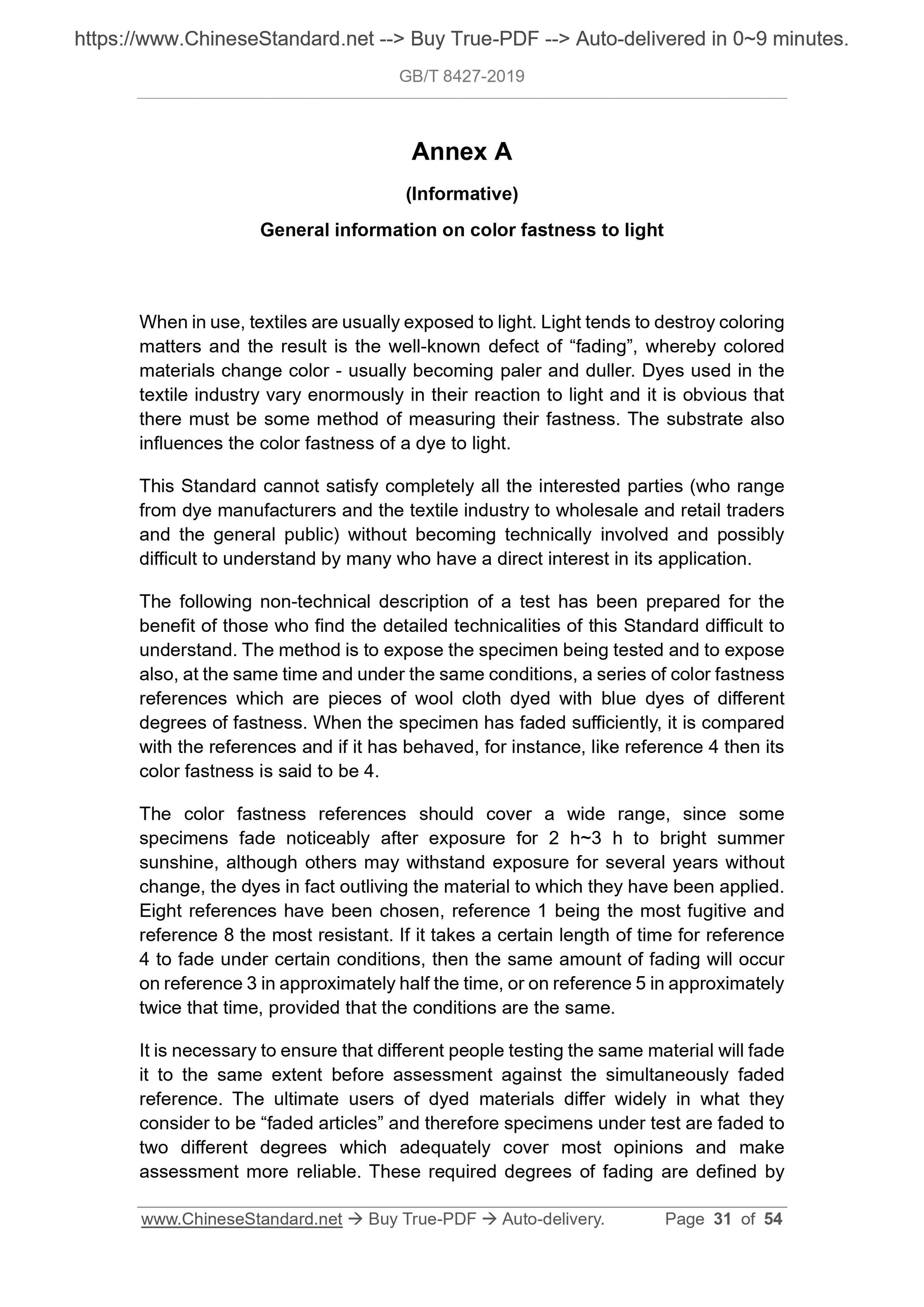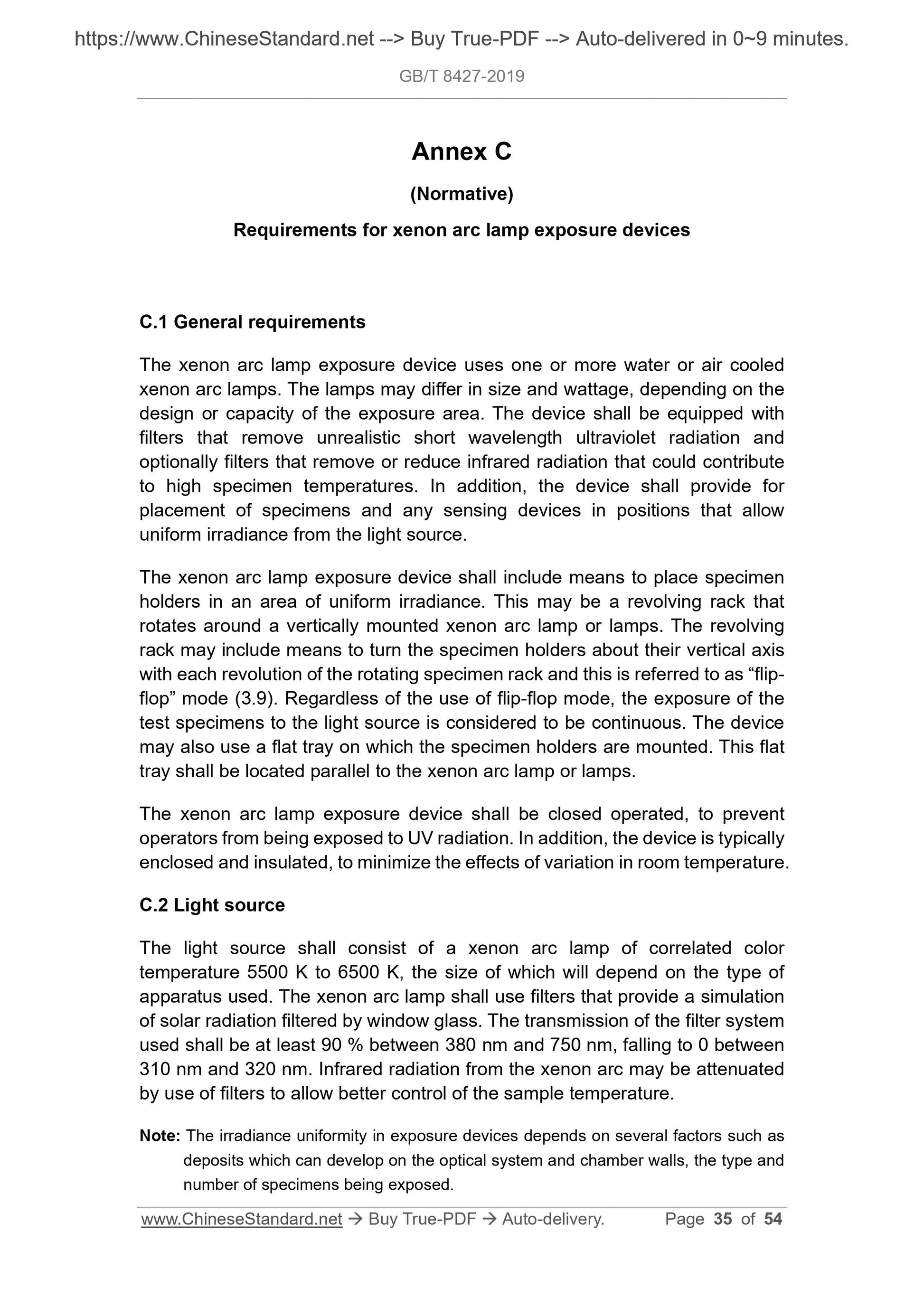1
/
of
12
www.ChineseStandard.us -- Field Test Asia Pte. Ltd.
GB/T 8427-2019 English PDF (GB/T8427-2019)
GB/T 8427-2019 English PDF (GB/T8427-2019)
Regular price
$285.00
Regular price
Sale price
$285.00
Unit price
/
per
Shipping calculated at checkout.
Couldn't load pickup availability
GB/T 8427-2019: Textiles - Tests for color fastness - Color fastness to artificial light: Xenon arc
Delivery: 9 seconds. Download (and Email) true-PDF + Invoice.Get Quotation: Click GB/T 8427-2019 (Self-service in 1-minute)
Newer / historical versions: GB/T 8427-2019
Preview True-PDF
Scope
This Standard specifies a method intended for determining the effect on thecolor fastness of textiles of all kinds and in all forms to the action of an artificial
light source representative of natural daylight (D65).
Basic Data
| Standard ID | GB/T 8427-2019 (GB/T8427-2019) |
| Description (Translated English) | Textiles - Tests for color fastness - Color fastness to artificial light: Xenon arc |
| Sector / Industry | National Standard (Recommended) |
| Classification of Chinese Standard | W04 |
| Classification of International Standard | 59.080.01 |
| Word Count Estimation | 34,359 |
| Date of Issue | 2019-12-31 |
| Date of Implementation | 2020-07-01 |
| Issuing agency(ies) | State Administration for Market Regulation, China National Standardization Administration |
Share
